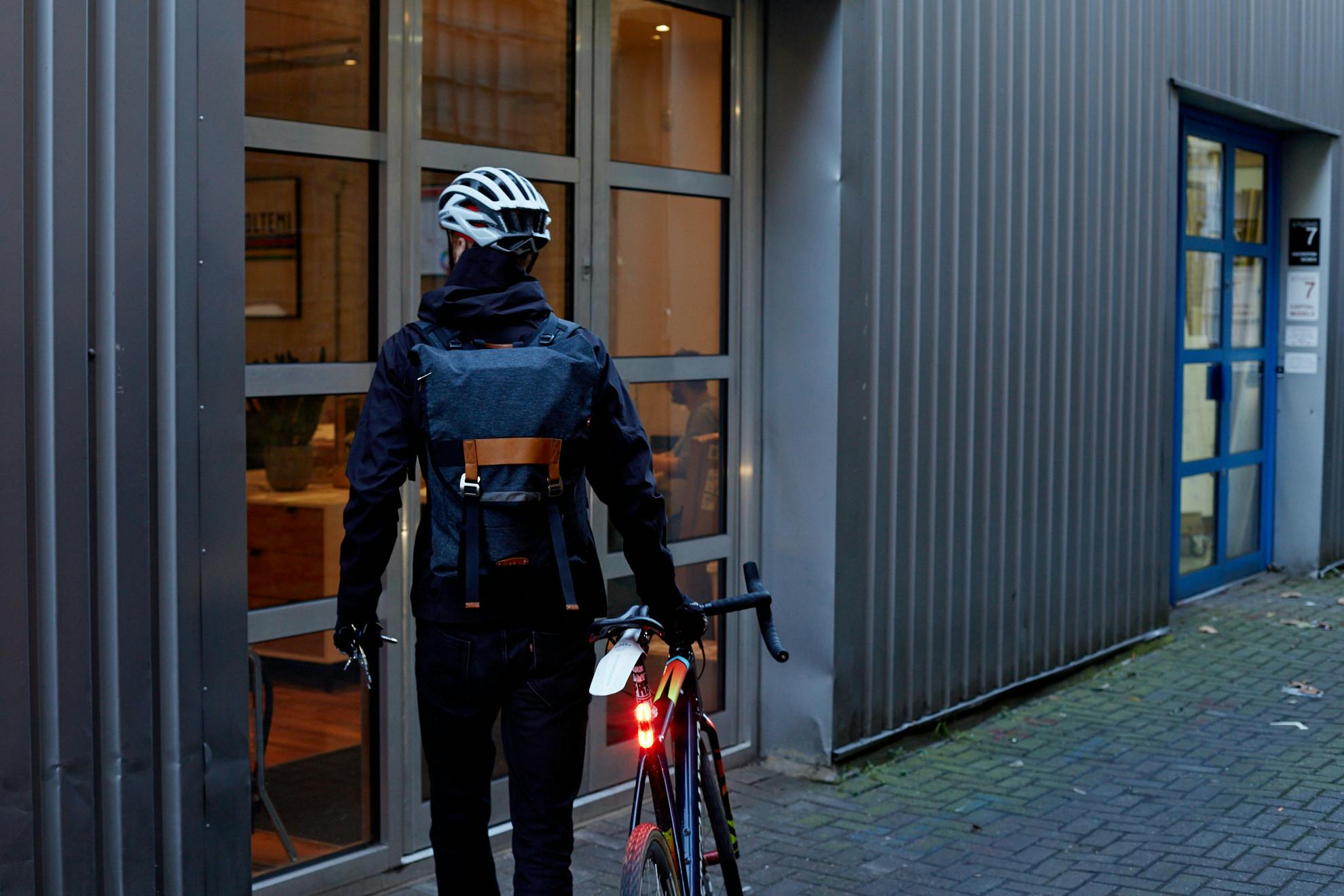Winter cycling tips
How to get ready for cycling in winter
Commuting by bike in the depths of winter can feel a bit uninviting. With a few tricks up your sleeve, riding a bike through the worst of the season will still beat sluggish traffic jams and congested trains. The physical, financial and mental rewards of cycling all year round are undisputed. We turned once again to the Beryl team for their best tips on getting through winter commuting. Alec Briggs put them to the test on a chilly January day in London.
Keeping warm
First rule: It is fundamental to keep your core and head warm. When your core temperature drops, your extremities - hands and feet - are the first to feel the cold, so it is crucial to prevent this from happening.
Your core is best kept warm starting with a decent base layer, one that wicks away sweat to keep you dry and warm. Merino wool base layers are an office favourite as they are great at wicking away moisture, and keeping dry is half the battle in keeping warm.

Tip:
When you can, carry a spare, just in case the one you used on the commute into the office doesn’t dry in time for the commute home.
Base layers often roll up small enough to fit in a jersey back pocket or saddle bag. Changing into a fresh dry base layer will keep you warm and will make your ride much more comfortable.

From the base layer, it’s all about layering up. It is often hard to tell how warm or cold it will be out there on the road from the comfort of indoors. Layering with thin multiple tops or jerseys rather than one big jacket is advised as the thin layers trap warm air between them and can be easily taken off or put back on depending on how you feel.
As for your head, a cycling cap or a thin hat under your helmet will keep your head warm and take the chill off. A neck warmer can assist in keeping the warm air in and stop a cold draft getting in too. You can even wear cycling-specific hats which cover your ears. Otherwise, a buff can be pulled up above your nose and ears to take the wind chill off.
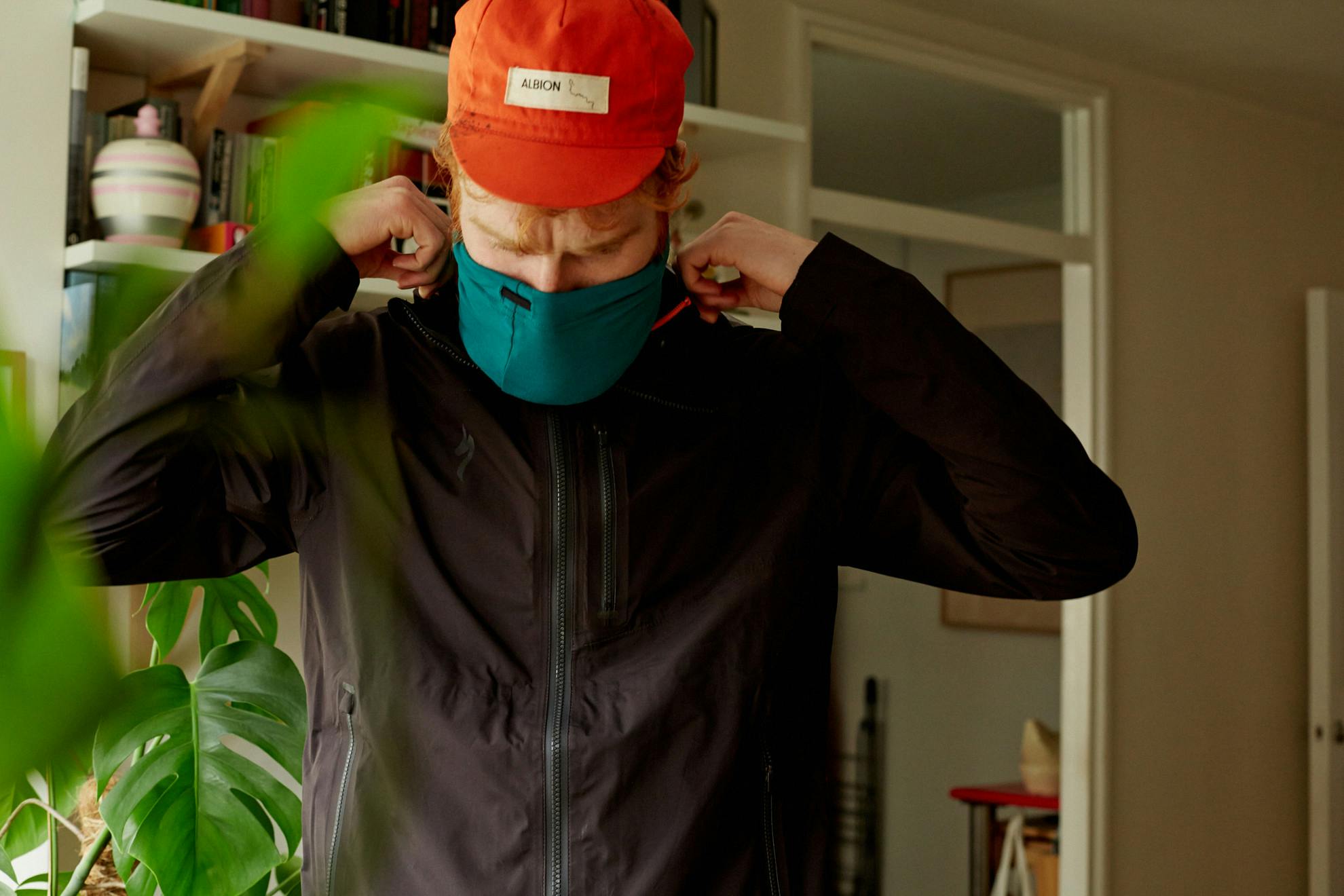
Hands
Cold hands make it difficult to use your brakes and bell, so keep them toasty with a good pair of gloves. On very cold days, you can layer your gloves - choose a thin silk or merino layer first, then an insulating mid-layer and a water and windproof layer as needed.
A quick hack when in desperate need is to place plastic gloves under or in between two thin gloves like the ones found at a petrol station to protect your hands when filling up your car.
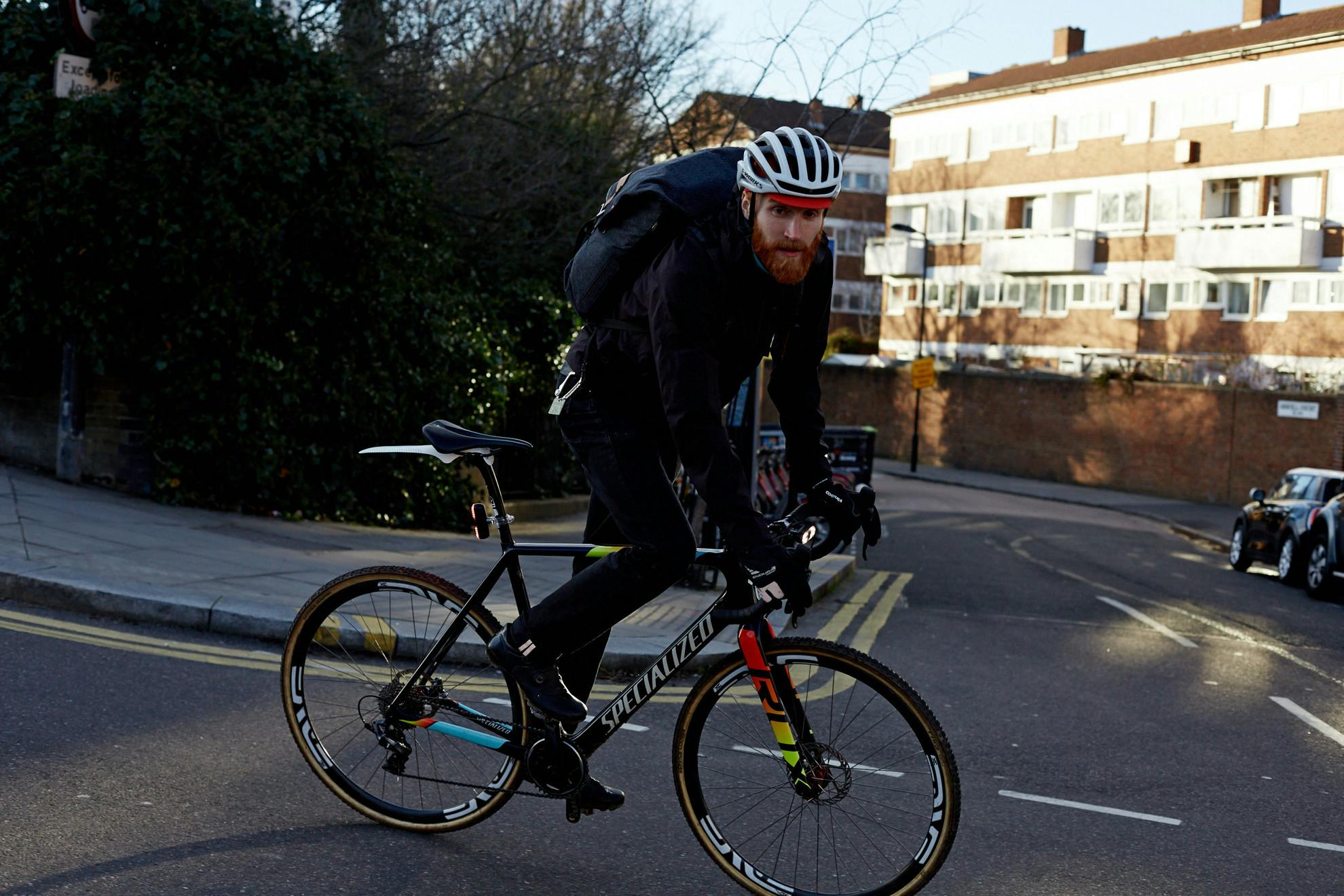
Feet
There are lots of different ways to keep your feet dry in rain or snow. Waterproof shoes, waterproof socks or overshoes are all good options and available for any budgets. Make sure that your chosen option is suitable for the kind of shoes and pedals you use, as overshoes can only be used with clip on pedals.
In times of need, cling film, aluminium foil or plastic bags can all be used as a waterproof lining. Wear a thin pair of socks, then put the film or bag on top, and then your thicker, insulating socks.
This does, of course, prevent sweat from escaping (it is not a breathable solution). Crucially, however, no water will be able to penetrate through to your skin, meaning your feet will stay dry and warm. When you choose your socks, bear in mind what they are made of as synthetic and natural materials have very different properties. Merino wool, for example, can keep you warm even when wet. However, the addition of synthetic fabrics can give socks better moisture management and keep your feet drier for longer.
Staying dry
Staying dry is the first hurdle in keeping warm. If you can keep dry, your chances of staying warm are greatly increased. We’ve already stated the importance of having a decent base layer that wicks away sweat to keep your body dry, which keeps your core warm leaving blood to flow to your extremities.
Mudguards are brilliant to have on your bike in keeping the water and grime from the road off you. Cyclists behind you will be thankful for mudguards which stop spray from the rear tyre going up too.
A quick way of keeping your back dry is by picking up something simple such as an Ass Saver. It's easy to fit to your bike but won't be effective at protecting the cyclist behind you from spray as a fitted mudguard would.
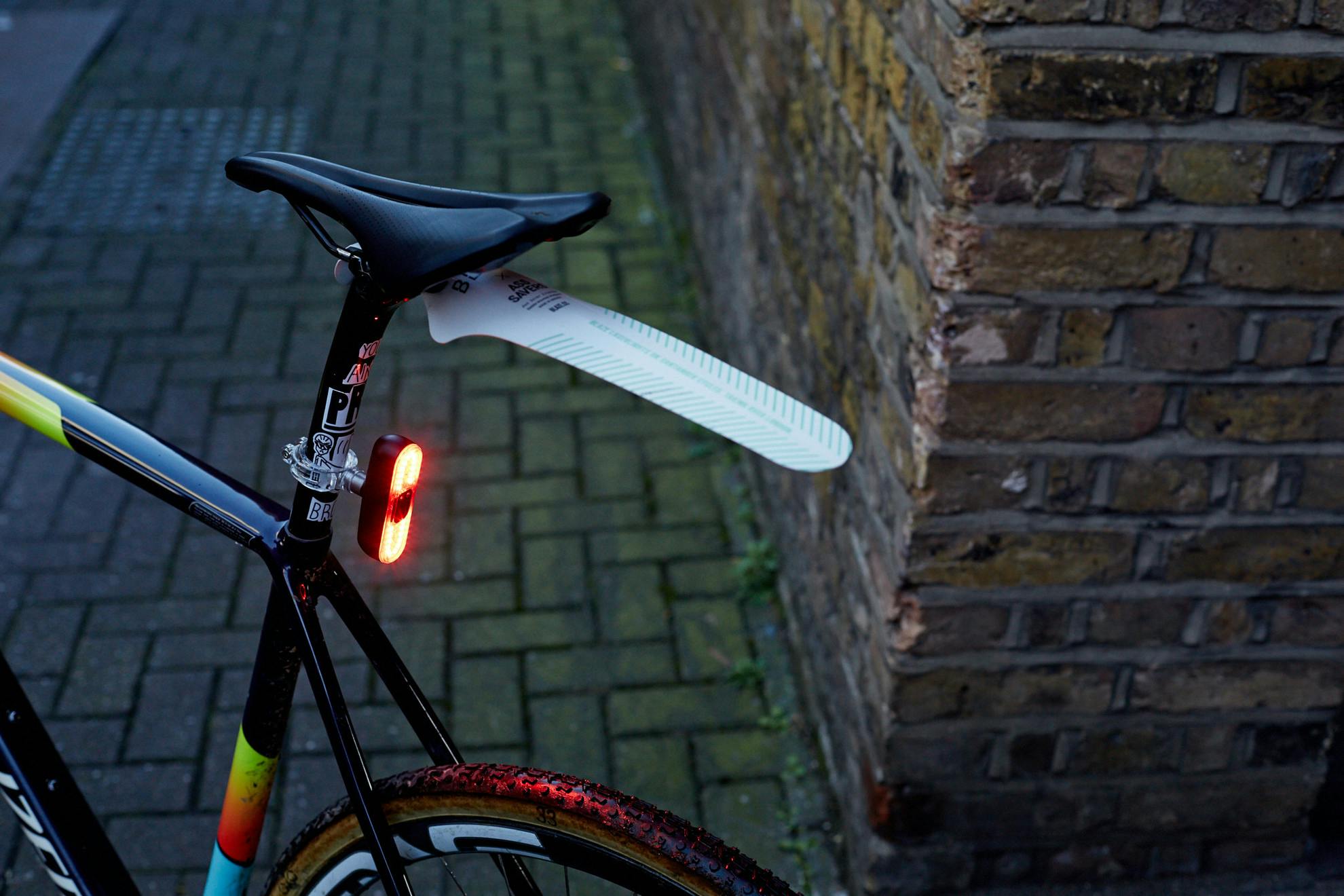
When things get wet
Sometimes you just can’t help getting wet. This can be particularly off-putting when commuting in because 1) you don’t want to be sitting around uncomfortable and wet all day, and 2) your valuables and electronics are in danger of being ruined.
It sounds obvious, but the first thing to do when commuting is to check the weather. Forewarned is forearmed. If it’s going to rain and you know you’re in for a soaking, keep what you’re going to wear on your lower half in a plastic bag within your main bag and wear something light and as water resistant as possible.
Water-resistant trousers are often easy and not too expensive to come by. There are designer options such as Levi’s commuter range with reflective stitching and panels too. Spare underwear stashed in your bag for the odd unfortunate day you soak through can do wonders for the comfort of your day too.

Secondly, keeping your valuables dry in your pockets and bags is a lot cheaper than you’d think when protecting thousands of pounds worth of gear. Seal your valuables in baggies / waterproof cover for your bag. Hot or cold weather, your valuables are likely to be susceptible to getting wet from either sweat coming through your jersey or from moisture off the road, sometimes both, which could end up damaging your expensive phones and wallets.
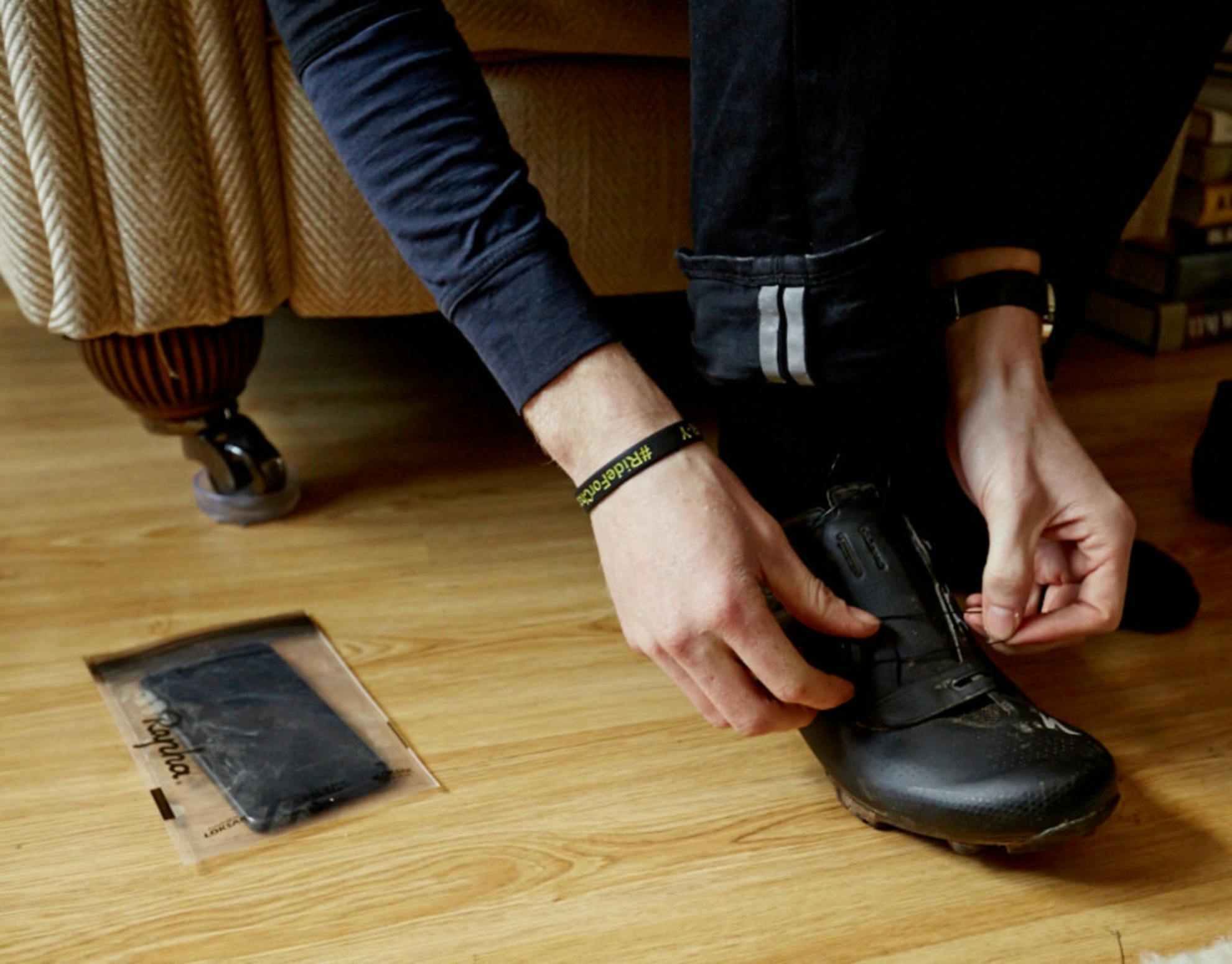
Sealable polythene bags are a great cost-effective way of protecting your valuables from moisture. You can buy them in multi-packs from most supermarkets for next to nothing. You can also buy phone-specific more durable zip lock bags off the internet if you prefer. There are even some cycling branded ones out there too.
If you carry a bag around while commuting, spare clothes and laptops could also take the brunt of wet roads, which is where a water-resistant cover for your bag may come in handy which are sold in a variety of shapes and sizes to fit over your backpack.
Tip:
Remember silica gel? The little bags that come in shoe boxes, which say “Do not eat” on them? They’re really useful for keeping things dry. Store them in laptop and valuable compartments of your bag as they’ll soak up any light dampness likely to be admitted by rain and keep your bag dryer all year around.
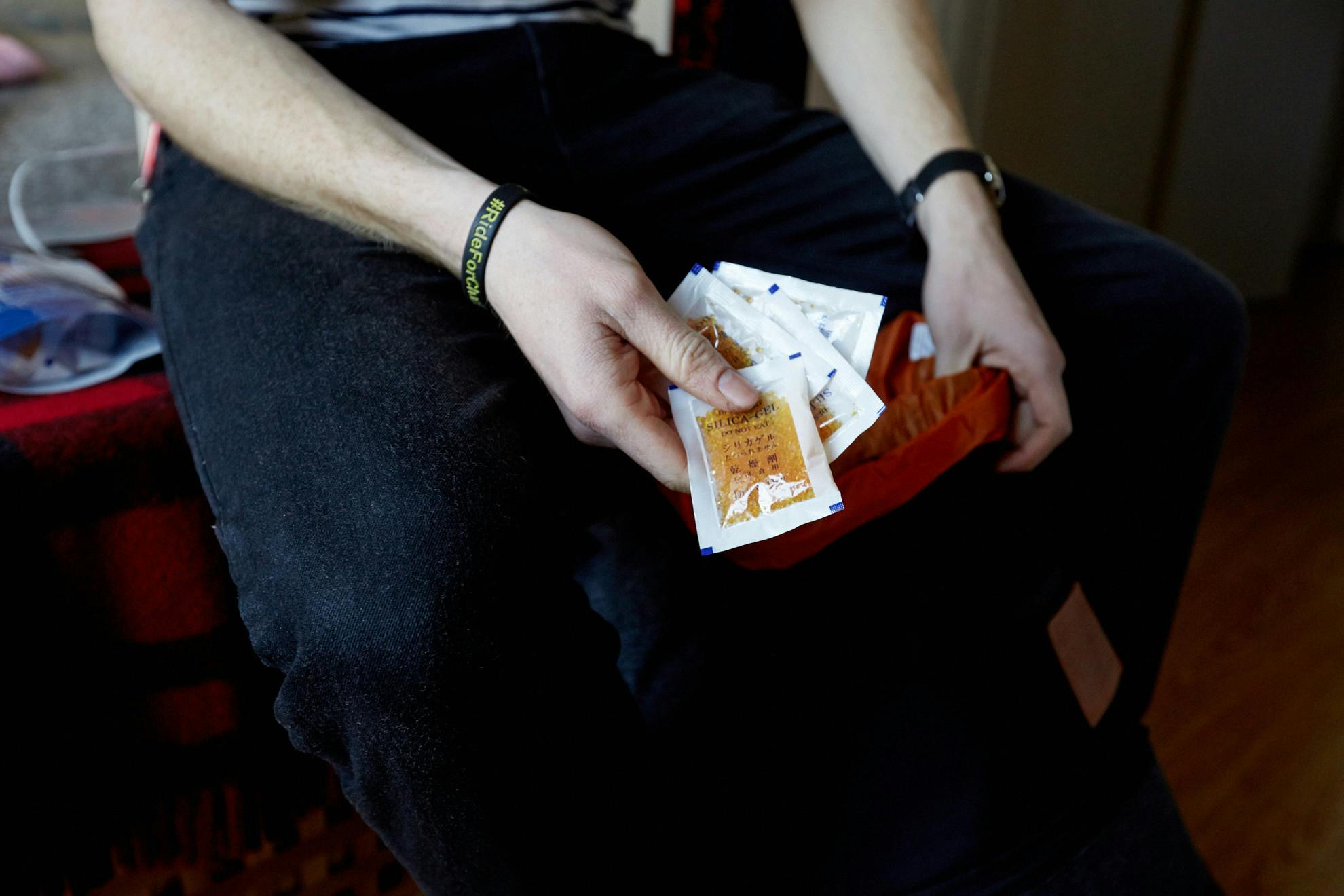
Warm drinks
Aside from a coffee pit stop at your favourite café, making up a hot drink in your bottle is a great way of assisting with warming up mid-ride, particularly when the core needs it. One of our team members also finds it helpful with their breathing when battling asthma and the cold air.
Thermal bottles are fantastic for keeping your both drinks cold and warm, depending on what you put inside them. So if you want to keep your drinks warmer or colder for longer, they might be a small investment worth making.

Preparing your bike for winter riding
With the rain, colder weather and muck on the road, all brought on by winter, grip can also be an issue. Lowering your tyre pressures slightly can add grip as well as comfort to your ride. Be sure not to go too low though, otherwise you could be susceptible to pinch punctures when having the misfortune of hitting such things as a pothole or curb.
To avoid having to fix a puncture on the side of the road in the cold and rain, adding tyre sealant to your inner tubes can seal punctures from flint, road debris and nails. For the cost of around about a £10, it’s a small price to pay for adding extra puncture protection and avoiding having to remove your gloves to change a tube.
Lights at the ready
When it comes to visibility and safety, lights on your bike all winter prepare you for the short days and accidentally getting caught by dusk or sudden changes in weather. It’s easy to do in the winter months, especially if you nip out socially after work before commuting home. The weather in winter can also be very gloomy in the daytime, so increased daylight visibility is only a positive when commuting and cycling on the roads. Add some small secondary lights to your helmet or bag so that you're easily spotted by other road users when it's gloomy - the Pixel is perfect. If you're leaving your bike outside in wet weather, Beryl lights are easy to remove from their brackets so you can take them with you.
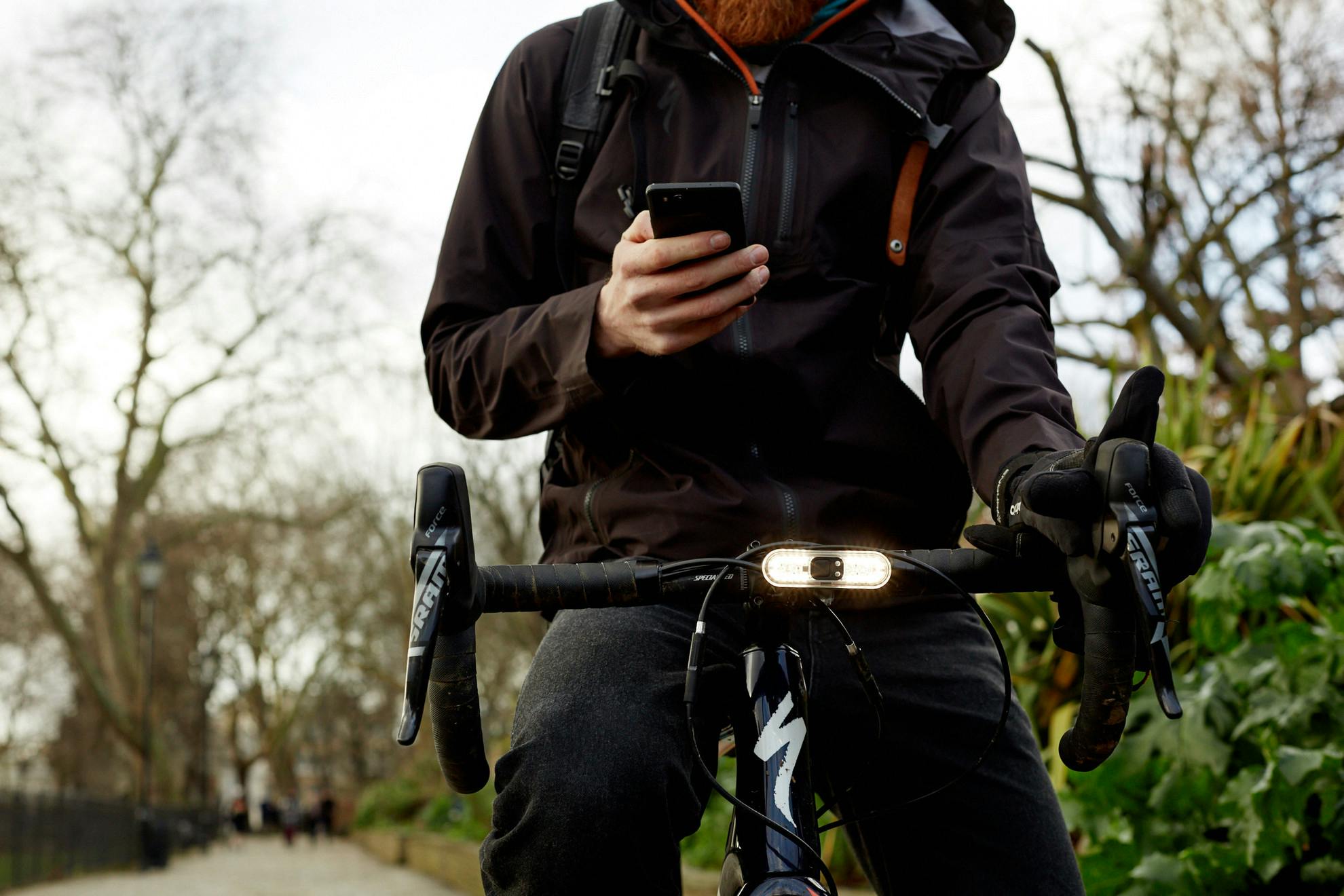
Commuter or racer, it’s rare you’ll be going for any record-breaking times in winter, especially with the weight of extra kit, mudguards and so on. Even the keenest of racers don't normally spend all winter racing, as these months are traditionally ‘off season’ and reserved for resting and base training, which for many is coupled by simply commuting. So follow their lead and take your time as you ride, especially in snow or ice.
